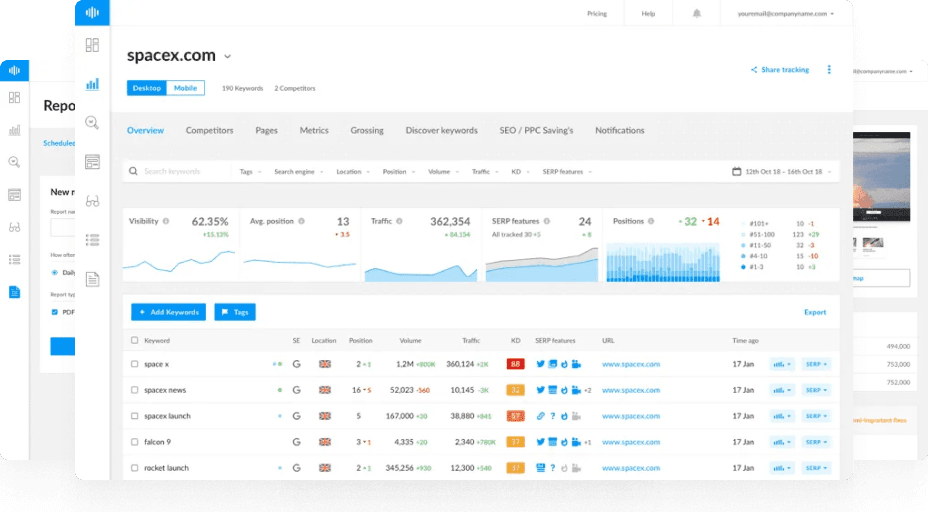Sitewide Link: What It Is and Why It Matters
A sitewide link is a hyperlink that appears on every—or nearly every—page of a website. These links are typically placed in areas that repeat across a site’s layout, such as the footer, sidebar, or navigation menu.
For instance, a digital agency may add a “Website by [Agency Name]” link at the bottom of every client website they build. This creates multiple backlinks from a single domain, potentially signaling strong association and visibility in search engines.
However, while this used to be a common SEO tactic for quick link-building, Google’s algorithms now evaluate such links carefully. Sitewide links can sometimes appear unnatural or manipulative, especially if the anchor text is keyword-rich or irrelevant to the linking site’s content.
Why Are Sitewide Links Important?
1. Visibility and Branding
When implemented naturally, sitewide links help maintain consistent visibility across a site’s entire structure. A small business logo linked in the footer, for example, can ensure brand exposure on every page. In this sense, sitewide links are useful for recognition and navigational consistency.
2. Backlink Influence
In the early days of SEO, marketers leveraged sitewide links to quickly boost backlink counts and domain authority. A single client website could generate hundreds or thousands of links to the same target domain. While this once had measurable SEO benefits, search engines now devalue repetitive patterns.
Today, one domain with thousands of identical sitewide links is often treated as a single unique referring domain by Google. The focus has shifted from sheer quantity to contextual quality.
3. Algorithmic Risk
Following Google’s Penguin update (first introduced in 2012), the search engine began penalizing over-optimized backlink profiles, particularly those containing manipulative or irrelevant sitewide links.
For example:
- A casino site linked from the footer of an unrelated travel blog.
- A keyword-stuffed “Best SEO Tools 2025” link placed across hundreds of client websites.
These patterns are easily detected and can result in ranking drops or manual penalties. Today, a balanced backlink strategy is critical for sustainable SEO growth.
How Sitewide Links Impact SEO
Sitewide links aren’t inherently harmful, but they can become problematic when abused. Here’s how they influence SEO:
- Positive effects: When contextually relevant, branded, and placed within trusted sites, they can provide valuable signals of partnership or authorship.
- Negative effects: When spammy, irrelevant, or keyword-stuffed, they may trigger Google’s algorithmic filters, leading to reduced trust or visibility.
The key is not whether sitewide links exist—but why and how they exist.
Best Practices for Managing Sitewide Links
1. Use Branded or Natural Anchor Text
Avoid over-optimized anchor text. Instead of linking with “best SEO software,” opt for neutral or branded text like “Powered by Ranktracker” or “Developed by YourCompany.”
This signals authenticity and avoids triggering spam filters.
2. Ensure Contextual Relevance
A sitewide link should make sense to the user. Footer credits or partner acknowledgments are fine, but promotional or unrelated outbound links can appear manipulative. Prioritize relevance to your business relationship or shared topic area.
3. Monitor Regularly
Track your backlink profile with Ranktracker’s Backlink Checker to identify new or suspicious sitewide links. Pair it with the Backlink Monitor to keep an eye on link health and avoid sudden influxes of identical backlinks from one domain.
4. Avoid Mass Placement
If you manage multiple client sites or partnerships, avoid placing identical links across them all. Instead, vary the anchor text and destination, or limit placements to a few key projects. Quality always outweighs repetition.
5. Balance with Editorial Links
Diversify your link profile. Combine natural sitewide credits with editorial backlinks, guest posts, and PR mentions. This creates a more balanced backlink portfolio aligned with Google’s E-E-A-T principles, emphasizing expertise, experience, authority, and trust.
Common Examples of Sitewide Links
-
Footer Credits:
“Website designed by [AgencyName.com]” – often seen on client sites. -
Sidebar Blogrolls:
Lists of favorite blogs or partner sites linking from every article page. -
Global Navigation:
A company homepage link placed in every page’s top menu. -
Affiliate or Partner Badges:
Logos or badges linking to affiliates or sponsors across all site pages.
While these links can be legitimate, they should always serve user intent and relevance first.
Are Sitewide Links Still Effective in 2025?
In modern SEO, sitewide links are no longer a shortcut to higher rankings. Google’s algorithms are smarter at detecting manipulation and focus on link diversity and contextual signals.
That said, they can still be valuable for branding, especially when used for:
- Verified partnerships
- Author credits
- Site design or hosting attribution
- Navigation or corporate network links
If implemented naturally and monitored using Ranktracker’s SEO tools, sitewide links can strengthen your backlink ecosystem rather than harm it.
Conclusion
A sitewide link is powerful when used intentionally and transparently—but risky when exploited.
Google no longer rewards quantity; it rewards authenticity and user value.
By maintaining a natural balance between editorial, contextual, and sitewide backlinks, you’ll build a sustainable link profile that withstands algorithm updates.
Use Ranktracker’s Backlink Checker and Backlink Monitor to identify, evaluate, and manage sitewide links effectively—ensuring your site’s authority grows the right way.
